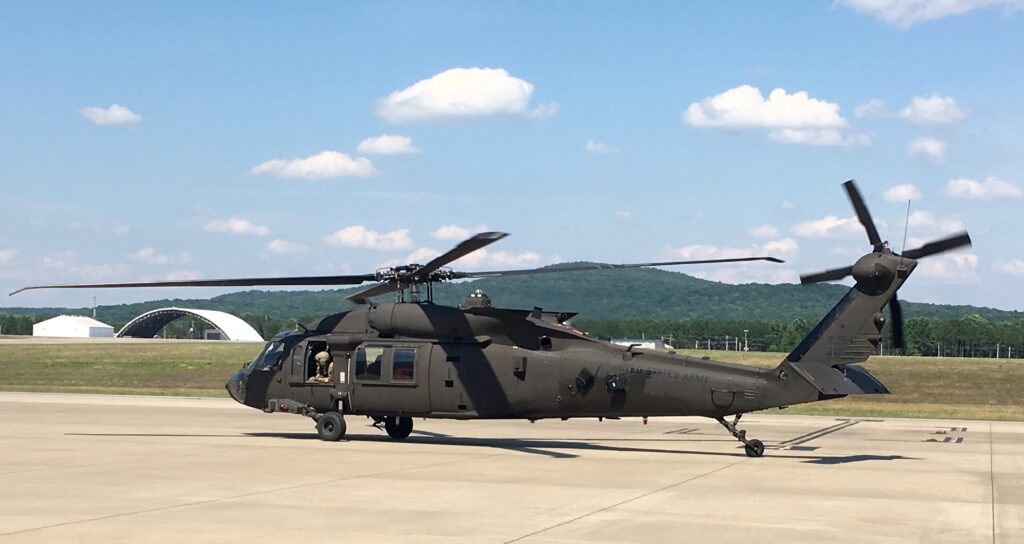US Army Awards CIRCM Full-Rate Production Contract to Northrop Grumman
On April 30, the US Army awarded Northrop Grumman Corporation (Rolling Meadows, IL) a $959.1 million, five-year, indefinite delivery/indefinite quantity (IDIQ) production contract for Common Infrared Countermeasures (CIRCM) systems. The contract provides justification and approval for the purchase of up to 596 CIRCM Bkit units over the contract period.

The CIRCM system uses advanced Quantum Cascade Laser (QCL) technology to protect US Army rotarywing and medium fixed-wing aircraft against IR-guided missile threats. Speaking at a virtual media roundtable last month, LTC Preston Pysh, Product Manager for ASE Countermeasures within Program Manager Aircraft Survivability Equipment (PM-ASE), described the process: “CIRCM receives a handoff from the aircraft’s missile warning system (MWS) which then provides the defeat capability (laser targeting) to the missile. Although the aircrew is notified of the systems’ actions, they [the MWS and CIRCM systems] work together autonomously and do not require crew interaction.”
Added COL Kevin Chaney – PM-ASE Program Manager, “From a strategic perspective, CIRCM fits in as part of our layered-protection approach. In combination with the MWS, it’s a layered detect-and-defeat capability.” Although active IR countermeasure systems, such as the Advanced Threat IR Countermeasures (ATIRCM) system, have been available on other, larger aircraft for some time, Chaney pointed out that “CIRCM is important because we didn’t have that defeat capability on our smaller aircraft, which required a lighter-weight solution. Instead, these aircraft had to rely exclusively on flares. Now, in combination with the MWS, we have a layered detect-and-defeat capability with both CIRCM and flare combinations. The arrival of CIRCM will also now allow for the phasing out of the legacy ATIRCM systems to help offset costs.”
In terms of the program’s timeline, as described by Lieutenant Colonel Pysh, it’s now moving on from the Low Rate Initial Production (LRIP) phase, which began in September of 2018 and lasted until April of this year. During the LRIP phase, the program successfully completed initial operational testing and evaluation in the Fall of 2019, and achieved a “first-unit-equipped” milestone in February of 2020. “The objectives, as we came out of the LRIP phase,” said Pysh, “were really to learn about and evaluate the technical maturation level of both the system, through rigorous testing, as well as the maturation of the production lines at Northrop Grumman and its subcontractors.”
Northrop Grumman’s Bob Gough, Vice President, Navigation, Targeting and Survivability, pointed to the fact that, “the Army set a very high standard in multiple parameters for getting to the full-rate-production decision. One was the very high-level of performance that had to be demonstrated in multiple free-flight missile tests against very challenging threats. Reliability was also a key determinant – being able to operate under the most extreme vibration, thermal, weather, etc,. conditions. And, proving flexibility was another high standard. Here, one of the key factors was our open architecture design that allows modular software upgrades to rapidly adapt to changes in threat profiles without major system redesign. Northrop Grumman appreciates the importance of setting such high standards, recognizing that lives are at stake here and our system must both work when needed, and it must be delivered on time.”
Right now, CIRCM is planned for the Army’s “big-three” rotary-wing platforms (Apache, Blackhawk and Chinook), as well as smaller fixed-wing aircraft. Although formal decisions have not yet been made regarding its possible inclusion on Future Vertical Lift (FVL) platforms, such as the Future Long-Range Assault Aircraft (FLRAA) or Future Attack Reconnaissance Aircraft (FARA), Colonel Chaney says he believes CIRCM is being considered along with other possible approaches to ASE. As to which specific fixed-wing airframes will receive the system, that has also not yet been finalized.
The Army is currently fielding the system at multiple locations using a “block-mod” approach. Chaney explains, “As we looked at it, we saw that we had the Limited Interim Missile Warning System (LIMWS) and the CIRCM system coming on line at about the same time, so we took on the challenge to see if we could combine those two system schedules along with other modifications from PEO Aviation, so that we’d only be taking the aircraft out of service one time while installing all of these modifications.”
Chaney says there’s no particular priority as to which of the big-three platforms will receive the system first. “At the time we did the first-unitequipped, we were planning for roughly two years to outfit a brigade, but since then, the Army has made some strategic shifts in timelines, etc., so we’re now trying to determine the optimal timeline for completion. In particular, we’re looking at understanding what kind of impact the use of block-mod will have with the Army’s Regionally Aligned Readiness and Modernization Model (ReARMM) going forward.” The ReARMM effort is aimed at aligning units across the total Army in a predictable and sustainable life cycle through training, modernization, and mission windows. – J. Haystead